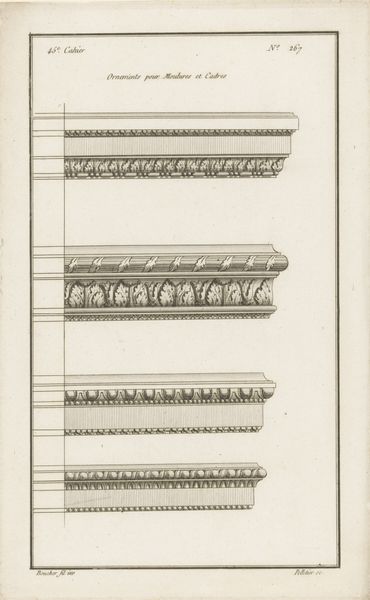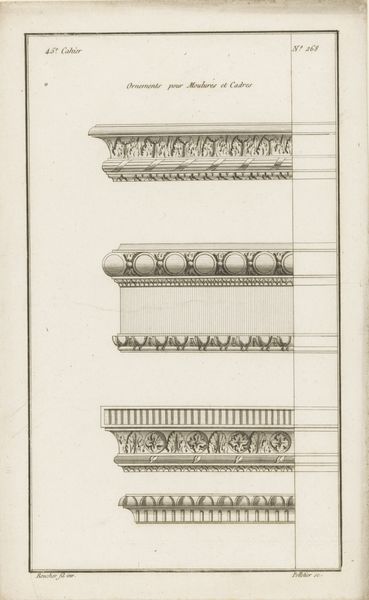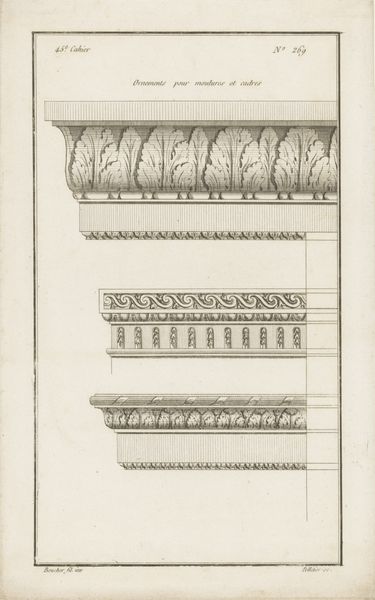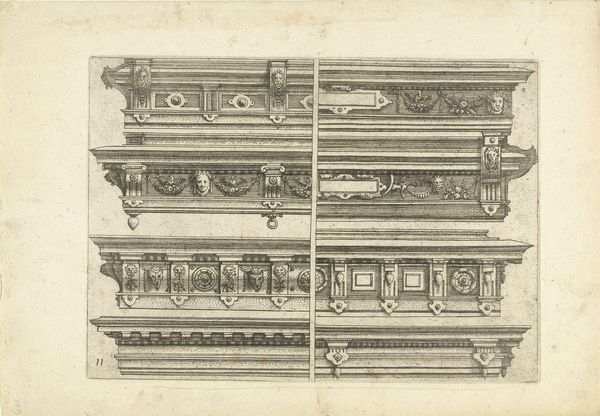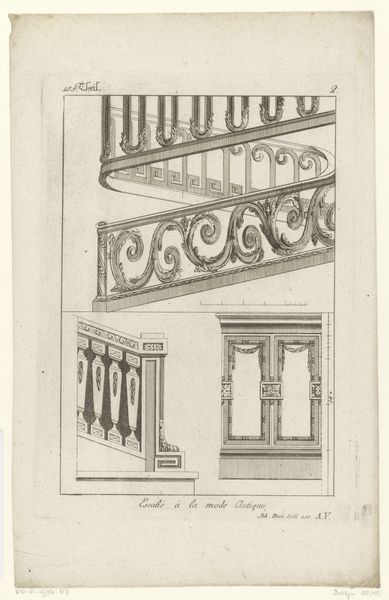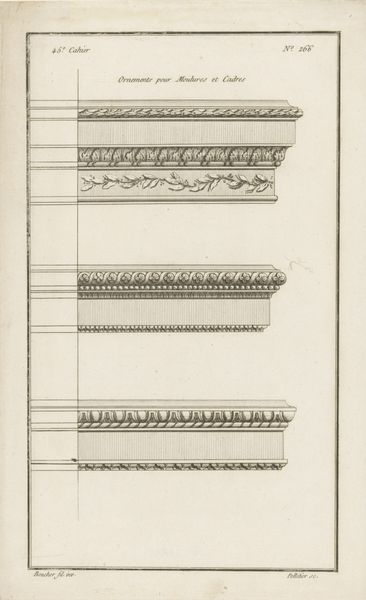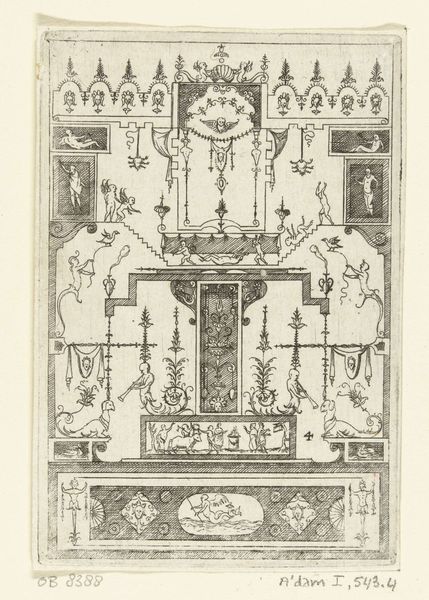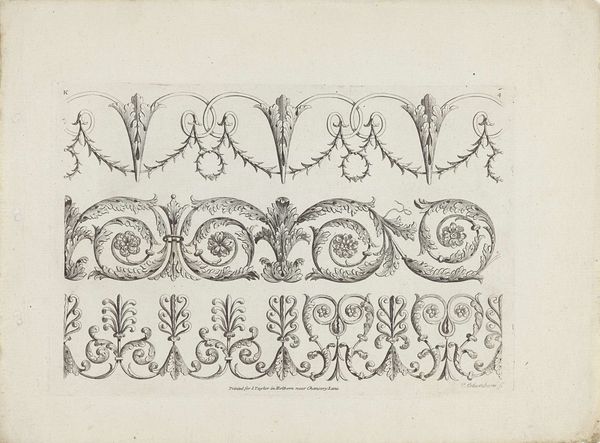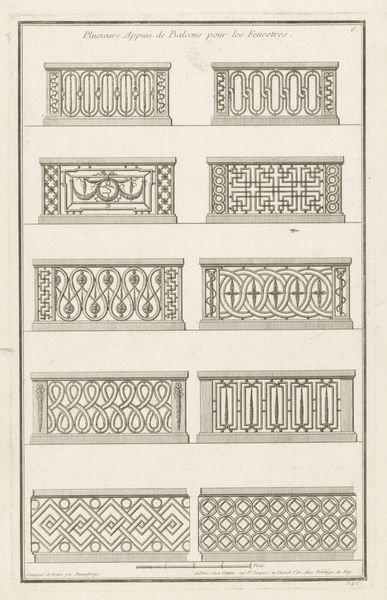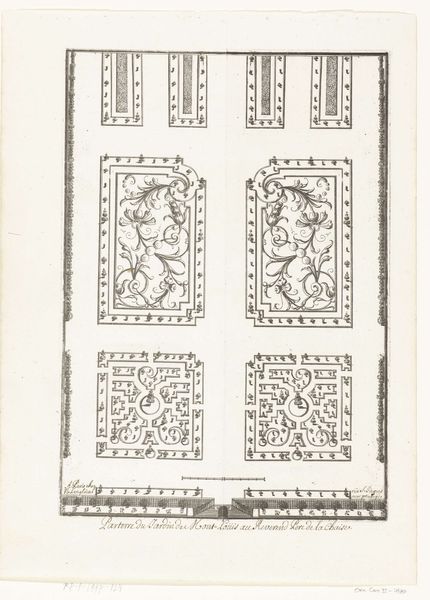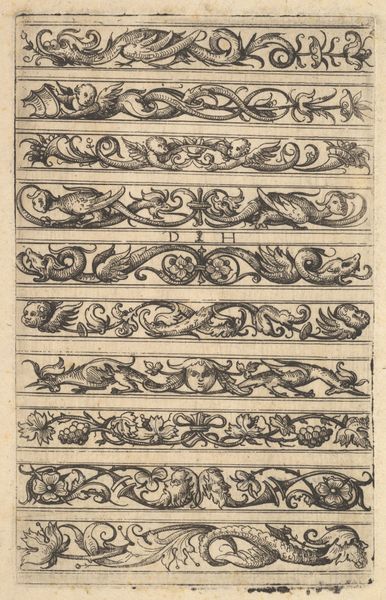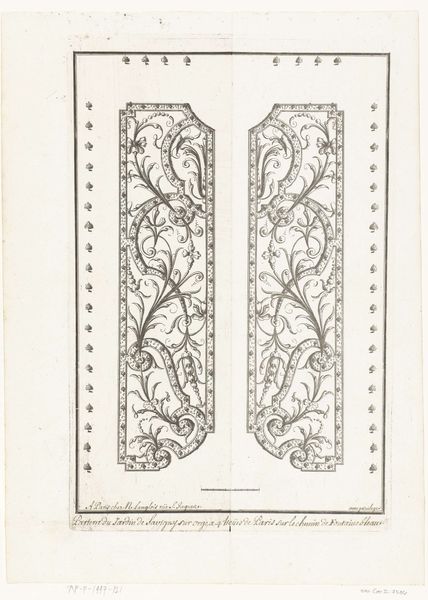
drawing, ink
#
drawing
#
baroque
#
ink
#
line
#
decorative-art
Dimensions: height 275 mm, width 193 mm
Copyright: Rijks Museum: Open Domain
Curator: Before us, we have "Four Cornices" by Daniel Marot, dating back to 1712. It's rendered in ink, a meticulous drawing showcasing Baroque decorative art, residing here at the Rijksmuseum. What are your first impressions? Editor: Visually dense. The ornate detailing competes for attention. It’s a blueprint, an instruction manual for makers, right? All that Baroque flourish and detail translated through manual labor. Curator: Absolutely. Note the elaborate use of line to create dimension and texture, how Marot suggests the play of light and shadow to articulate depth in each cornice. He’s less concerned with faithful replication of materials and more engaged with rendering abstract form. Editor: I am drawn to how the drawing serves as a transfer of Marot’s intellectual design onto a material support, which in turn would be replicated and installed by tradespeople with diverse skill sets, under particular financial arrangements. Each cut of the stone, each manipulation of plaster or wood...that’s labour right here. Curator: Undoubtedly, the application involves craftsmanship and physical effort. Still, let's not overlook the drawing's function within the Baroque aesthetic: The balance, the rhythmic repetition of motifs, and the hierarchical layering... all speak to a structured order and controlled opulence. Semiotically, the details could tell us much about period tastes and the aspirations of the patrons who commissioned such embellishments. Editor: Of course, it does demonstrate a specific visual language and order of that time. Yet I see how material conditions also dictate these forms; How else would such artistry and complex design find their actualisation but by hands, in workshops, often bound by rigid guilds and commission-based incentives. It underscores a fascinating relationship between high design and everyday materiality. Curator: True enough, but focusing solely on those practical aspects is reductive. The elegance, the precision...Marot distills more than just a practical instruction into this image. There's an aesthetic vision, divorced from function. Editor: But the vision is inseparable from the tangible result. It provokes consideration for how aesthetic intentions meet real-world application and modification. This isn’t purely conceptual; it demands understanding production methods in that epoch. Curator: A vital point. Thank you. Editor: Likewise, these details shed insight on artistic creation from the ground up.
Comments
No comments
Be the first to comment and join the conversation on the ultimate creative platform.

